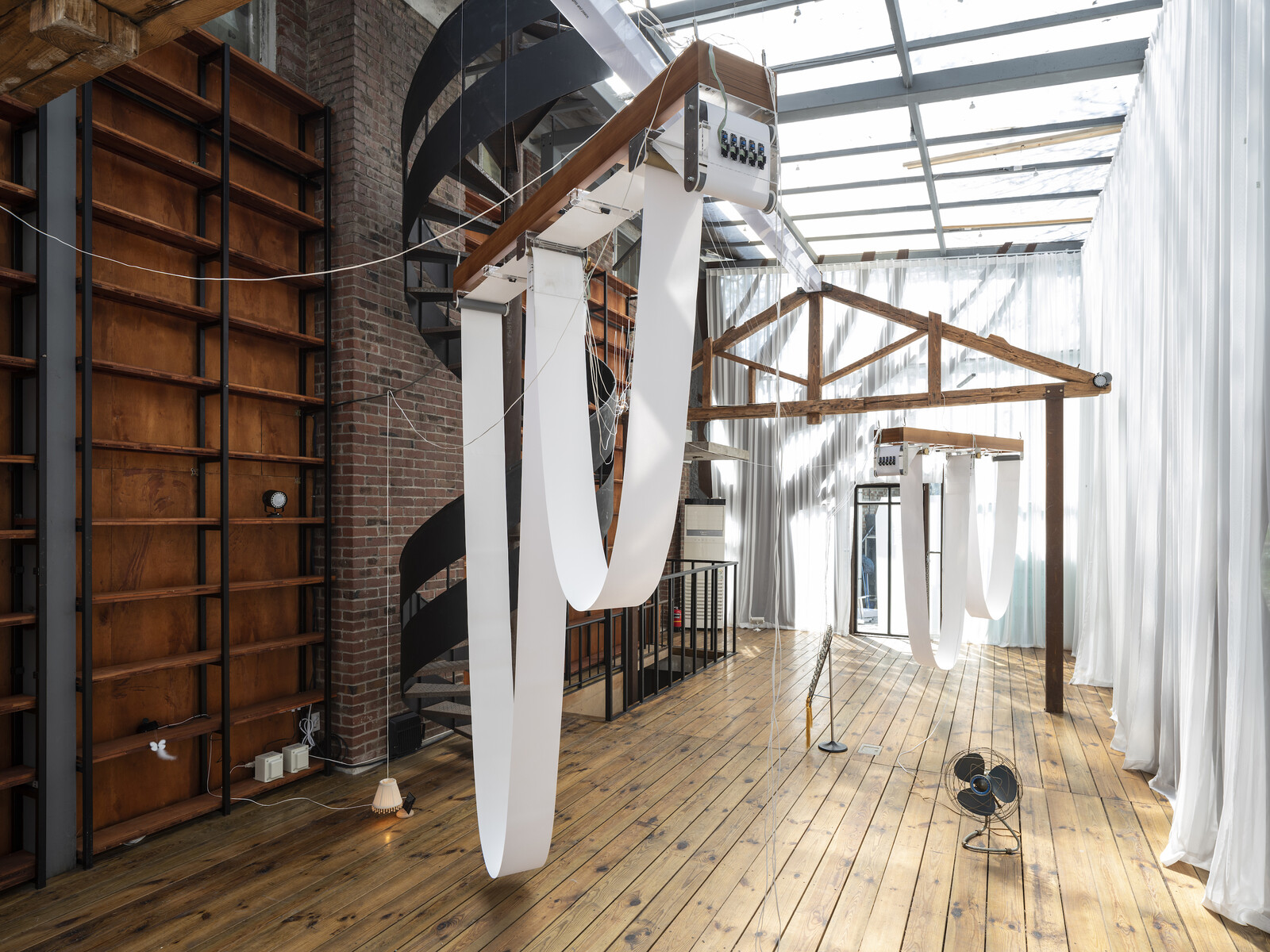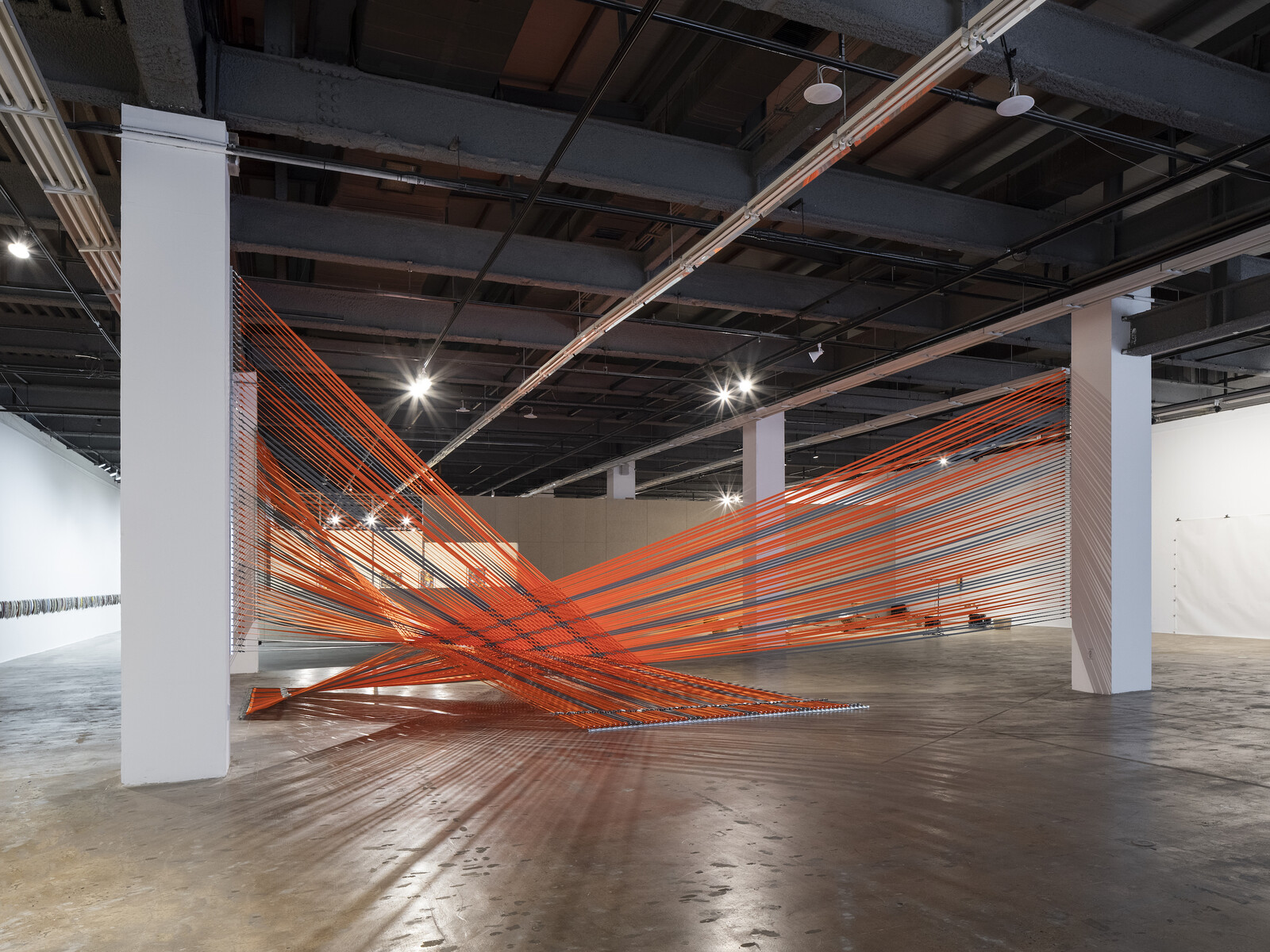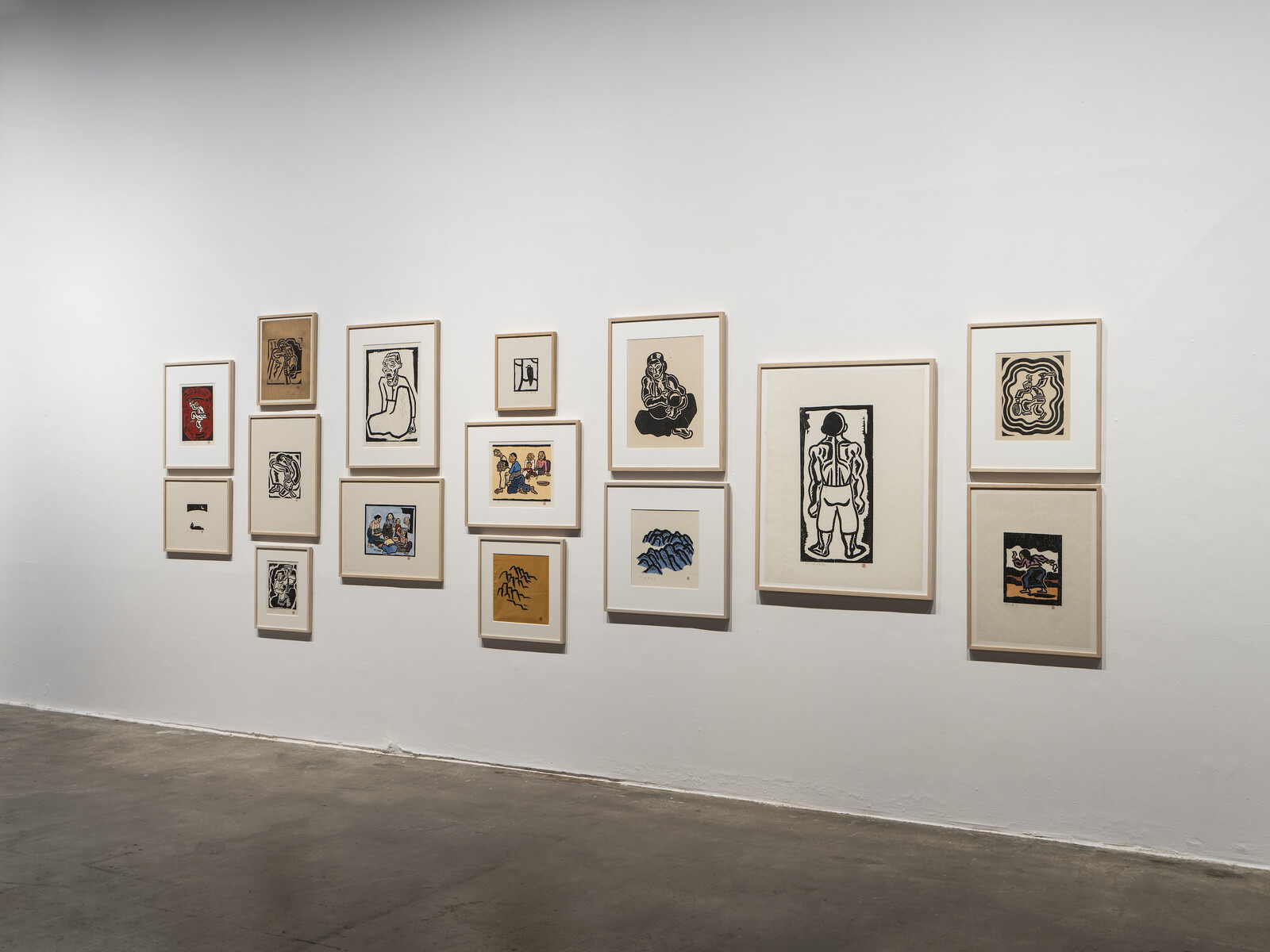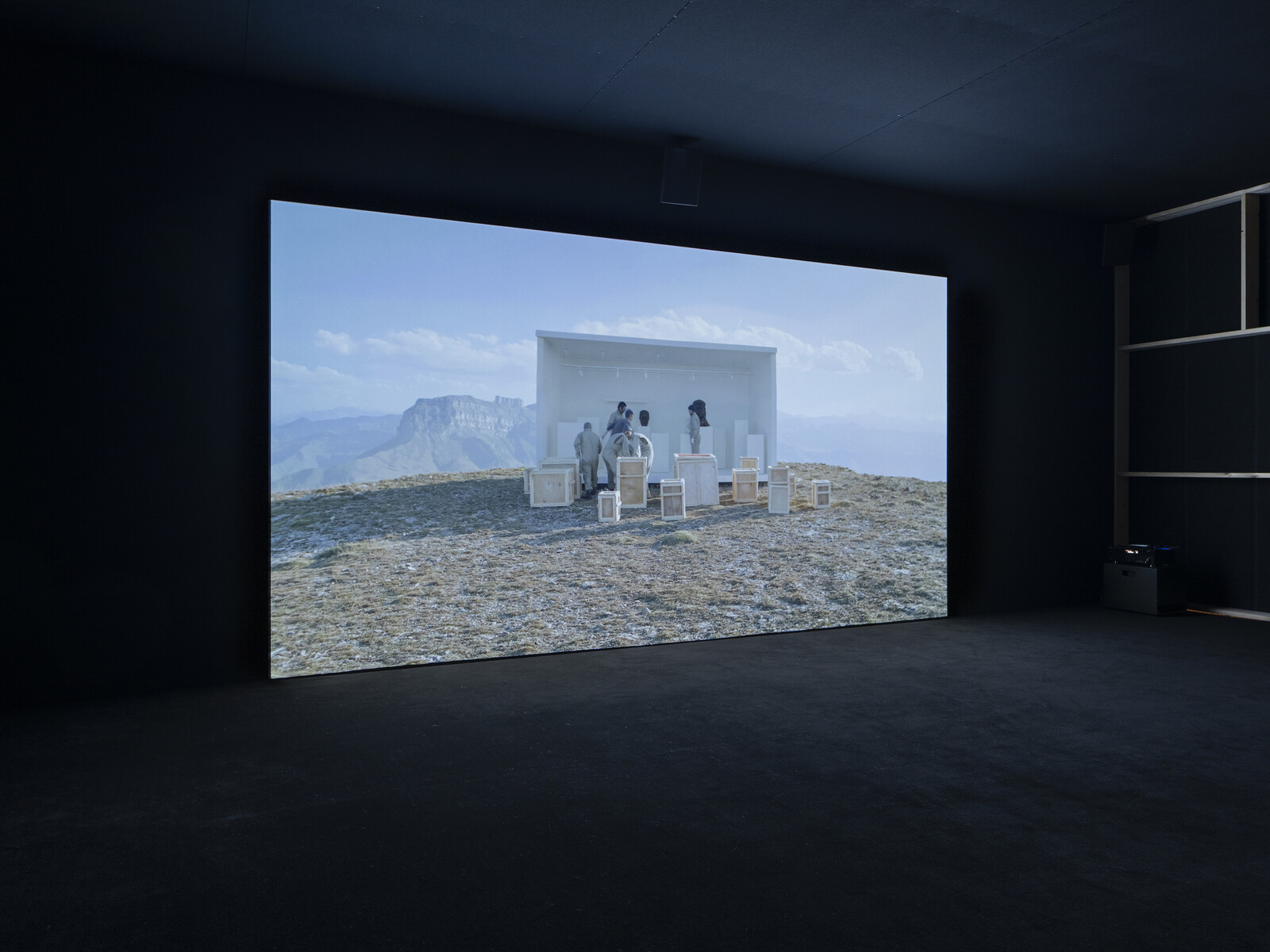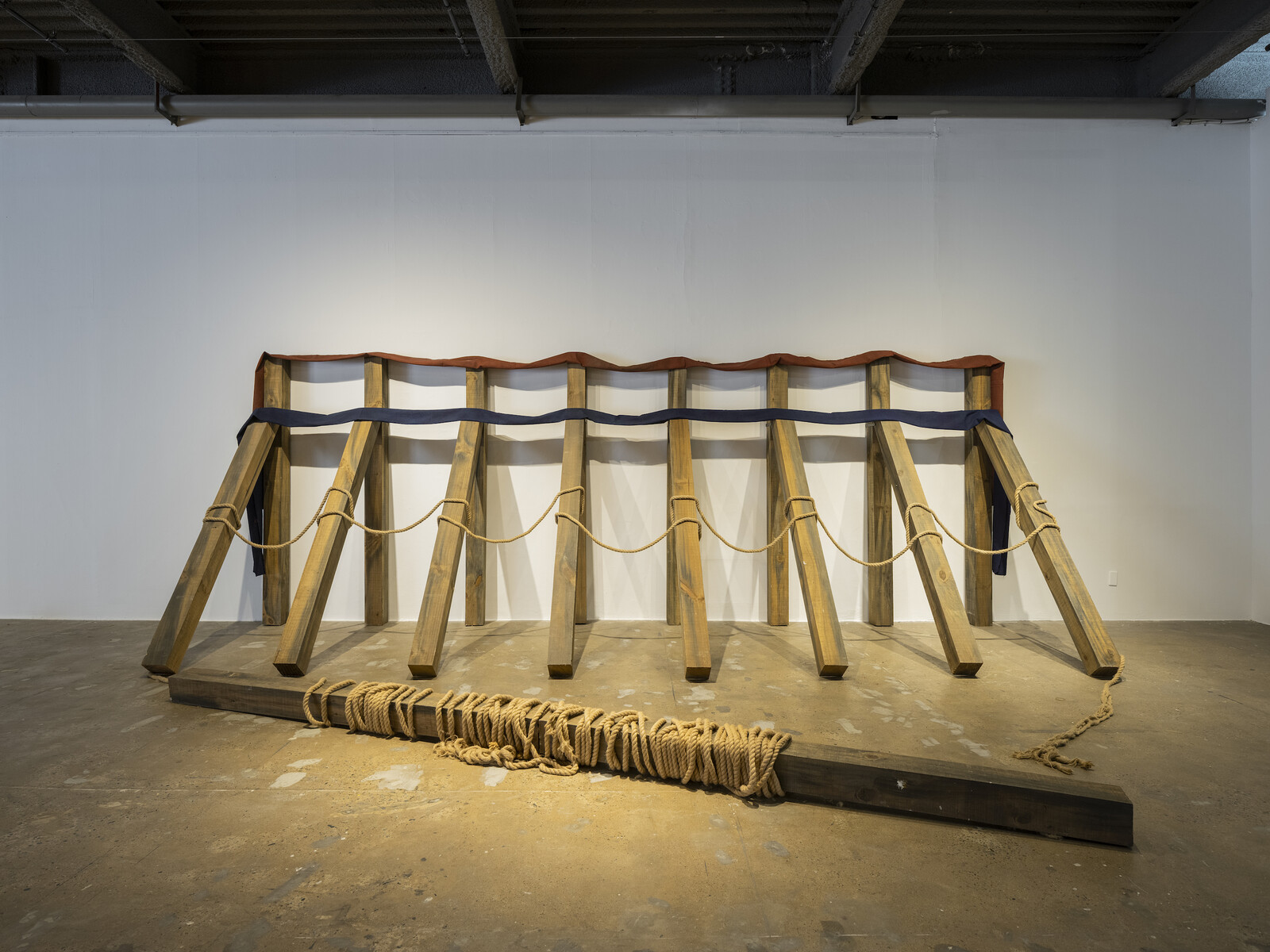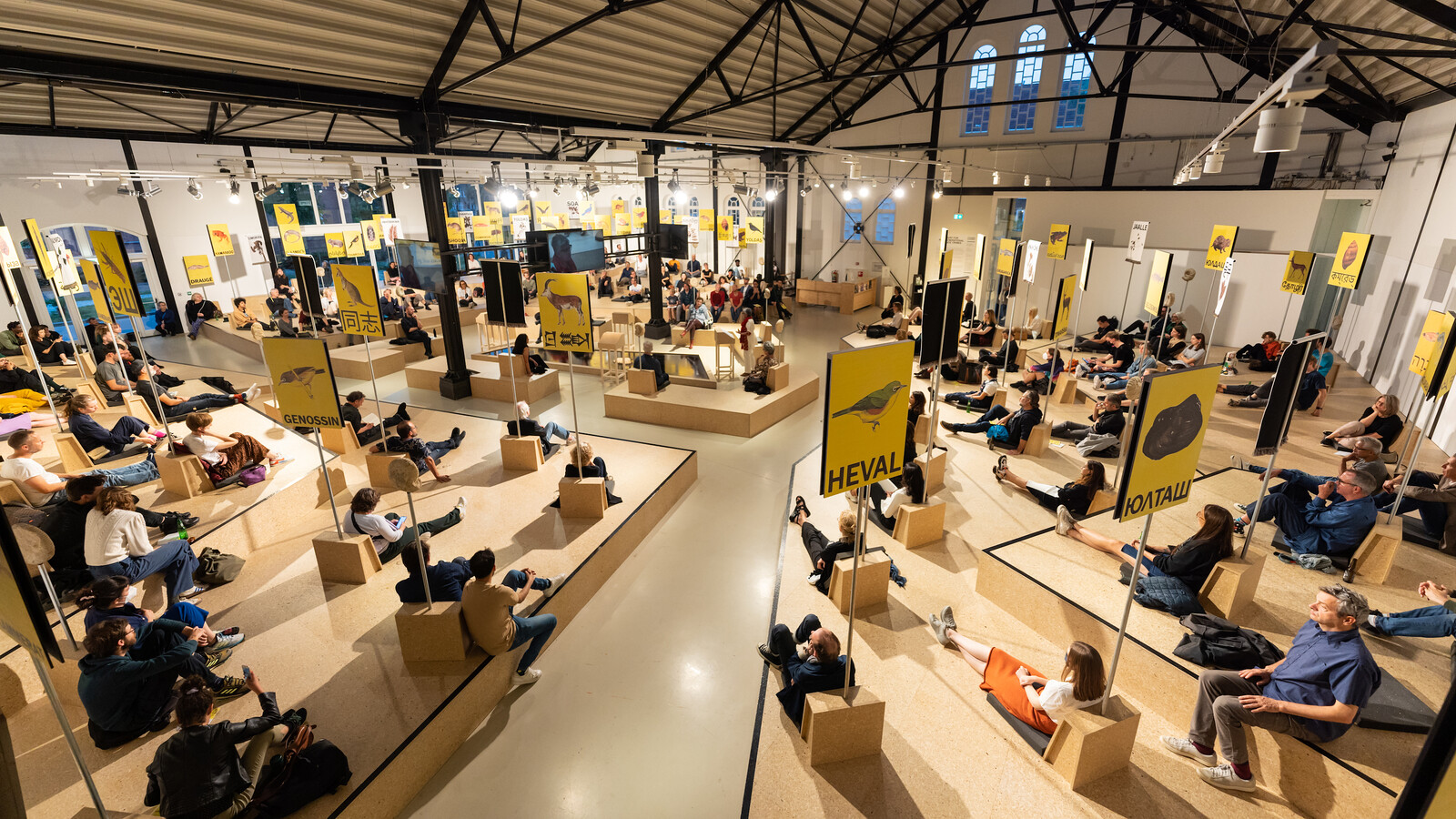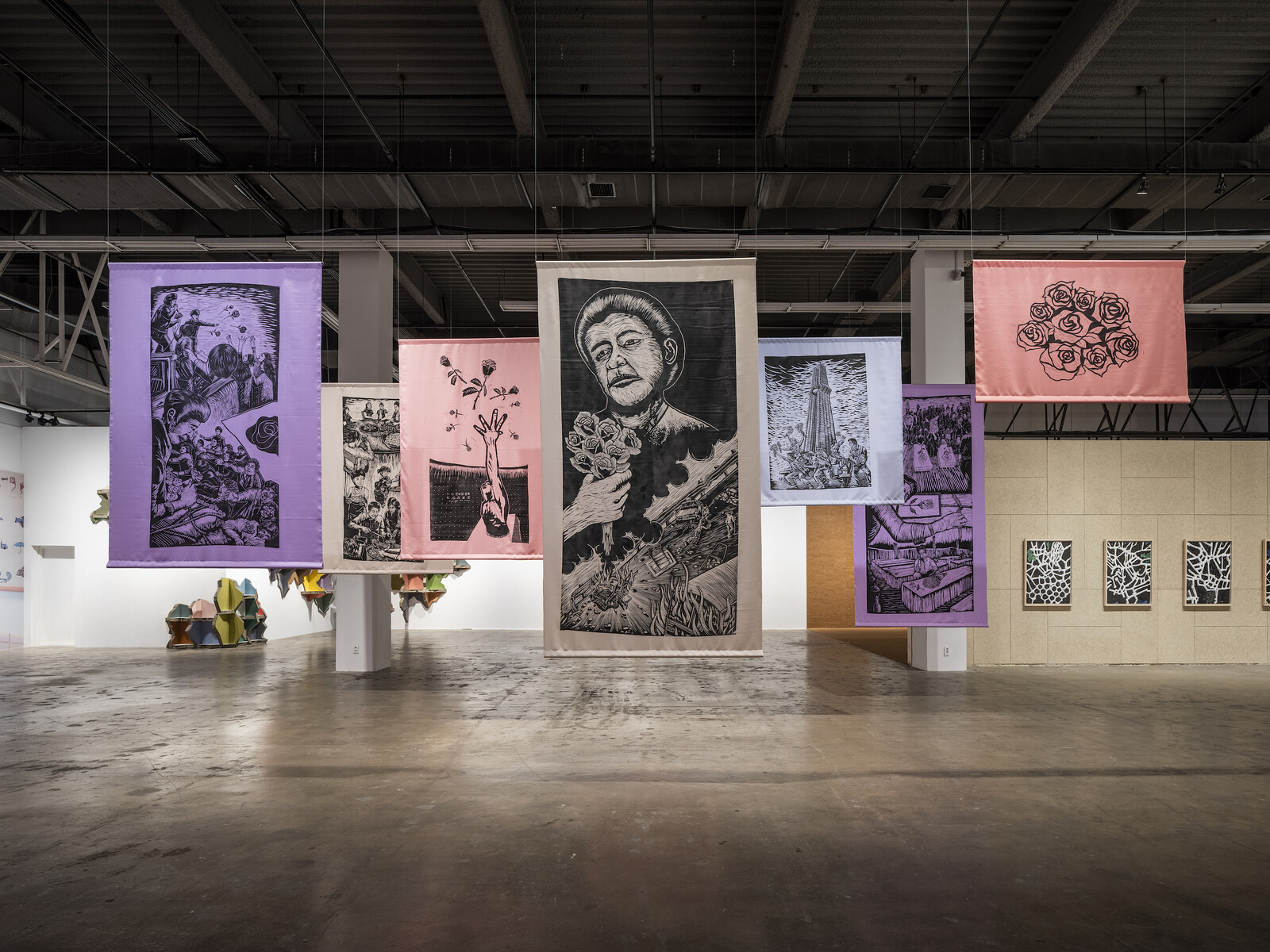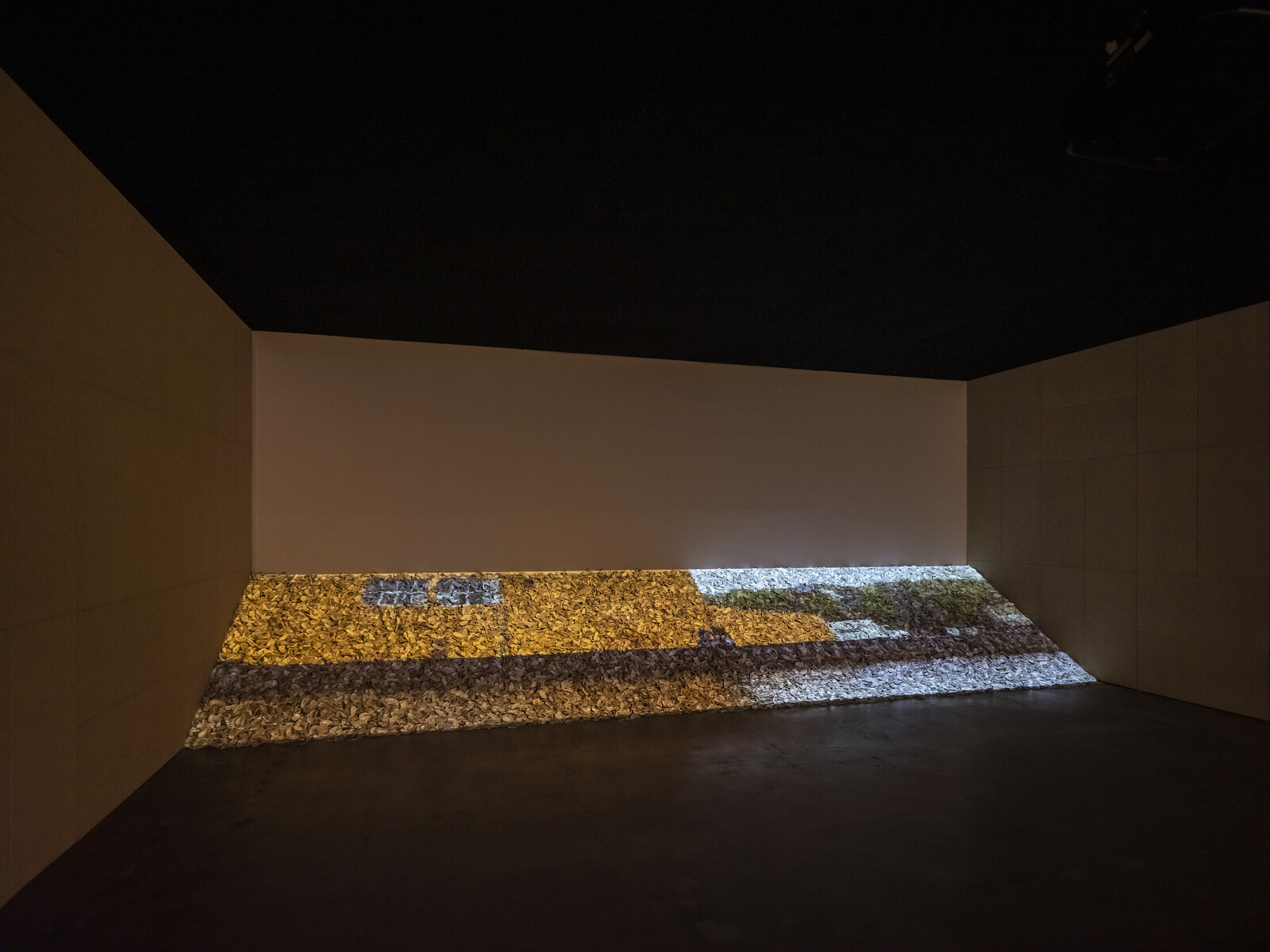The cavernous exhibition hall of the Gwangju Biennale was built in 1994 and intended to host only one exhibition. Walking through the same structure—comprising four mega halls connected by ramps, and still in use by the biennale—feels like exploring an abandoned world expo site. These vast spaces have vexed curators from Okwui Enwezor to Maria Lind, yet this year’s artistic director, Sook-Kyung Lee, has embraced the rickety structure. Instead of constructing new white walls to conceal the building’s decline, Lee and her team have largely left the space as it stands, with the exception of a few partitions of uncut boards and natural-fiber panels.
This sensitivity to exhibition environment carries through a thoughtful, slow-moving show that allows ample space for each work to be considered on its own terms. Reflecting Lee’s artist-centric approach, it’s a relatively intimate biennale: seventy artists, many presenting new commissions. A focus of these is textile installations, which demand a particular attention to their making. I-Lann Yee’s Tepo Putih Ikan Masin (Salted Fish White Mat, 2023) is a hanging composed of woven-together north-Malay mats, typically used for drying fish and in other domestic settings. A colorful, shimmering work, it brings disparate references to mind, including kintsugi practices, in which broken ceramics are repaired with gold, and El Anatsui’s minimalist installations. The installation Tuakirikiri (2023) by Mataaho Collective, whose members are Māori, weaves together industrial orange and grey trailer ratchet straps to brace the building, turning the hall into a large-scale loom. Extending this sensitive approach both to fibers and exhibition spaces is Yuko Mohri’s kinetic installation I/O (2011–2023), in which long reams of white paper are affected by humidity, dust, and other atmospheric conditions in the gallery. This playful work—as with many in this exhibition—draws viewers’ attention to material culture while hinting at the social and political conditions in which it is produced.
Elsewhere, Lee’s curation successfully recontextualizes the practices of Korean older male ajeossi artists whose avant-garde practices, more often than not, stand out at the expense of lesser-known works. Exhibiting these pieces seamlessly alongside their neighbors invites viewers to interpret them in queer and feminist contexts. A standout example is Seung-taek Lee’s Untitled (You Can Make Anything With It) (1967–70/2001/2023), a large-scale sculpture comprising wooden battens laced together with rope, which viewers can arrange as they please. Lee Kun-Yong’s gestural “Bodyscape 76-3” series of wall drawings, meanwhile, takes on a more whimsical quality than the original. First made in 1976, this version invites the audience to make their own crayon and pencil marks according to the artist’s instructions.
The biennale was founded to commemorate the student-led Gwangju Uprising of May 18, 1980, in which pro-democracy protestors were massacred by the military dictatorship.1 This edition gently connects that history, including several pieces by the widely celebrated artist Oh Yoon. Yoon, who died in 1986, worked in the minjung tradition of expressive social realism that developed in the wake of the massacre. Malaysian collective Pangrok Sulap brought a translocal perspective to the Gwangju Uprising, creating a new series of works about the movement using the minjung technique of woodblock on fabric. Nuanced connections such as these were complemented by a community protest in the opening days, fomented by a controversy surrounding an infrastructural addition to this year’s biennale: the Park Seo-Bo Prize, which awards $100,000 to a single artist in the biennale—Oum Jeongsoon was this year’s winner. Park Seo-Bo was an originator of Dansaekhwa, an influential style of monochromatic painting. He refused to speak out against the military dictatorship for decades and his sponsorship of the prize caused protests at the opening ceremony, with protestors demanding it be renamed in celebration of Oh Yoon.
Elsewhere, the few moving-image works in this biennale excavated other painful histories embedded in landscapes. Alan Michelson’s Midden (2021), projected on a mound of shells of the ancient regional staple of oysters, traces the lands of the forcibly displaced Lenape through post-industrial New York ruins. The landscapes of colonization examined in this exhibition extend to the Pacific islands via ikkibawiKrrr’s Tropical Story (2022), a two-channel video installation that takes an indexical approach to remnants of war and extractivism—such as overgrown airstrips and burial grounds—and insightfully captures the overlapping effects of these powerful forces on the environment. Taus Makhacheva’s hour-long video Цlумихъ (At the Eagles, 2023) takes a more personal approach to situating memory within the geographical landscape. In the mountainous steppe of Dagestan, the artist constructs a set that resembles both a film stage and a white cube, which she populates with bronzes of her grandfather, the Soviet poet Rasul Gamzatov.
Kim Sunjung—a former Gwangju Biennale director and president of its foundation from 2017 to 2021—established a national pavilion model in a nod to Venice. This year, Radha D’Souza and Jonas Staal’s Netherlands Pavilion—titled Court for Intergenerational Climate Crimes—Extinction Wars (2023), and presented by Framer Framed—took over the Gwangju Museum of Art, blending a series of climate actions and forums with calls for reparations to more-than-human beings. This example aside, there does not seem to be a serious attempt under the current director to create a generative ecology of pavilions; rather, there is an assortment of open call–style shows of varying degrees of quality and interest without any clear unifying theme. Future editions might benefit from centering attention on the biennale’s main show and shedding the unnecessary pavilion infrastructure.
This feels especially true given how deftly Lee’s exhibition advances Gwangju’s reputation, carefully turning the worn-out Exhibition Hall into a site of reflection on a moment of entangled geographies and histories. The exuberant large-scale exhibition returning “after” Covid-19 has given way to a quieter and more meaningful biennale, while the advent of Frieze Seoul last year clearly impacted opening attendance at Gwangju. It is yet to be seen if the exhibition will continue to command the international audiences it has in the past, yet this year’s edition continues the biennale’s tradition of high profile exhibitions that should not be missed. Sidestepping bombastic projects, it highlights how it might open space for works, artists, and communities to be heard and to listen to one another.
The South Korean government put the official toll of dead and missing people at 200, though eyewitness reports and most academic estimates suggest that the true number is many times higher.
